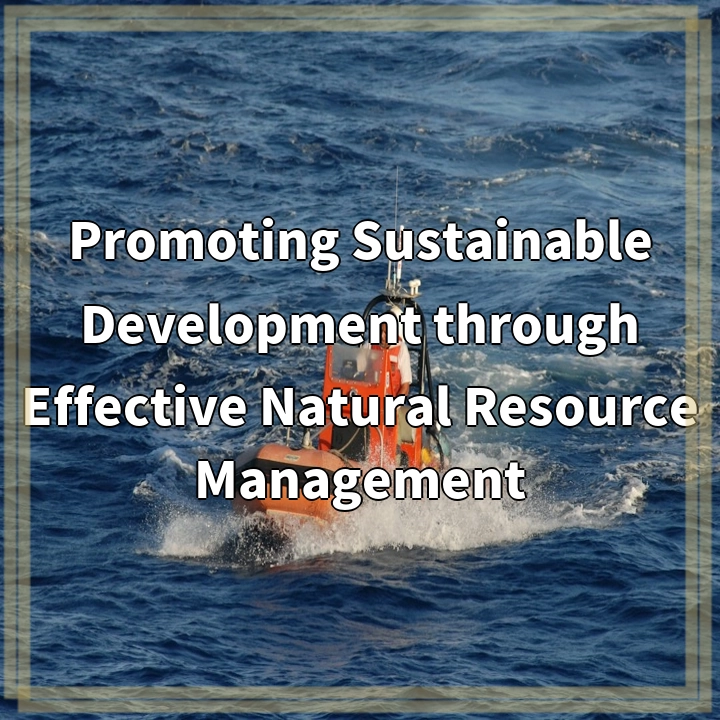
What is Promoting Sustainable Development through Effective Natural Resource Management?
Natural resource management encompasses the sustainable utilization, conservation, and protection of resources such as land, water, forests, and minerals. The goal of promoting sustainable development through effective natural resource management is to ensure the long-term availability and viability of these resources while also considering social, economic, and environmental factors.
Real-World Problems Associated with Natural Resource Management
Despite the importance of natural resource management for sustainable development, various challenges persist. These problems arise due to a range of factors, including inadequate governance frameworks, unsustainable consumption patterns, population growth, climate change, and conflicting interests among stakeholders.
1. Deforestation and Loss of Biodiversity
The rampant clearing of forests for agriculture, urbanization, and industrial activities results in the loss of critical habitats, biodiversity, and ecosystem services. It leads to a decline in species diversity, disruptions in ecological balance, and the loss of vital resources that local communities depend on.
2. Water Scarcity and Pollution
Water resources are under increasing pressure due to population growth, industrialization, and agricultural practices. Inefficient water management, contamination from industrial pollutants and agricultural runoff, and climate change contribute to water scarcity, compromising both ecosystems and human well-being.
3. Land Degradation and Soil Erosion
Unsustainable land use practices, such as deforestation, overgrazing, and improper agricultural techniques, contribute to soil degradation and erosion. This results in reduced agricultural productivity, loss of fertile soil, and increased vulnerability to natural disasters like floods and landslides.
4. Unsustainable Energy Consumption
Rapid industrialization and urbanization lead to increased energy demand, often met through the unsustainable extraction and burning of fossil fuels. This has adverse environmental impacts, including air pollution, greenhouse gas emissions, and climate change, which further exacerbate natural resource challenges.
5. Conflicts Over Resource Distribution
Scarce resources can become a source of conflict among different stakeholders, including governments, local communities, and industries. Disputes over land rights, water allocation, and access to natural resources can lead to social unrest, displacement of communities, and weakened governance systems.
Conclusion
Addressing these real-world problems associated with natural resource management is crucial for promoting sustainable development. It requires integrated approaches that involve effective governance mechanisms, sustainable consumption and production practices, and equitable resource allocation. Only through such measures can we ensure the long-term availability and equitable distribution of natural resources while safeguarding the health of ecosystems and communities.

Solutions for Promoting Sustainable Development through Natural Resource Management
Addressing the real-world problems associated with natural resource management requires a holistic and multifaceted approach. Here are some key solutions:
1. Conservation and Restoration
Implementing conservation measures, such as protected area management and reforestation efforts, can help combat deforestation and loss of biodiversity. Restoring degraded ecosystems and promoting sustainable land use practices can also contribute to biodiversity conservation and mitigate land degradation.
2. Sustainable Water Management
Adopting sustainable water management practices, including rainwater harvesting, efficient irrigation techniques, and wastewater treatment, is vital to address water scarcity and pollution. Encouraging water conservation at all levels, promoting ecosystem-based approaches, and investing in water infrastructure can improve water availability and quality.
3. Responsible Land Use
Encouraging sustainable land use practices, such as agroforestry, sustainable agriculture, and soil erosion control measures, can help combat land degradation and soil erosion. Implementing land-use planning strategies, promoting land rights and tenure security, and supporting sustainable urbanization are also essential.
4. Transition to Renewable Energy
Promoting the shift towards renewable energy sources, such as solar, wind, and hydropower, can reduce reliance on fossil fuels and minimize environmental impacts. Supporting research and development in clean technologies, implementing energy efficiency measures, and encouraging sustainable energy consumption are crucial steps in this transition.
5. Stakeholder Collaboration and Conflict Resolution
Facilitating inclusive decision-making processes, fostering dialogue, and promoting equitable resource distribution can help resolve conflicts over resource access and allocation. Engaging all relevant stakeholders, including governments, local communities, and industries, in participatory and transparent processes can lead to more sustainable outcomes.
Conclusion
The solutions mentioned above require a collective effort towards sustainable development through effective natural resource management. By integrating these strategies into policies, practices, and everyday actions, we can create a more sustainable future, ensure the availability of vital resources, and protect the well-being of both ecosystems and communities.















